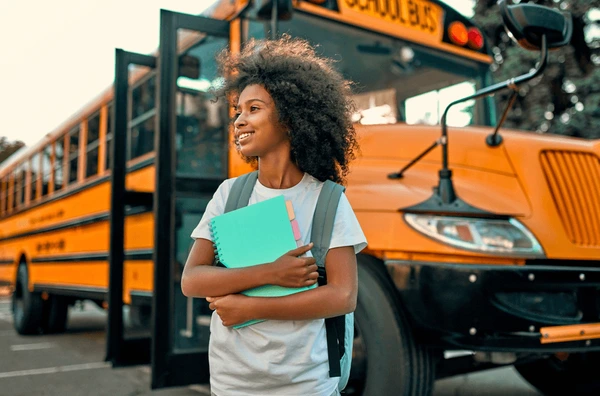JAKARTA, incaschool.sch.id – In today’s rapidly evolving educational landscape, creative competitions have emerged as a transformative approach to learning. These competitions encourage students to think creatively, collaborate, and develop innovative solutions to real-world challenges. This article explores the significance of creative competitions in schools, their benefits, and how they can change the educational game for students and educators alike.
The Importance of Creative Competitions in Schools

1. Encouraging Innovation and Creativity
Experience
Creative competitions provide students with the opportunity to explore their creativity and think outside the box.
Benefits
- Idea Generation: Students are encouraged to brainstorm and develop unique ideas, fostering a culture of innovation within the classroom.
- Risk-Taking: These competitions promote a safe environment for students to take risks and experiment with unconventional approaches.
2. Enhancing Critical Thinking and Problem-Solving Skills
Experience
Many creative competitions focus on solving real-world problems, challenging students to think critically.
Benefits
- Analytical Skills: Students learn to analyze complex issues, evaluate different perspectives, and devise effective solutions.
- Collaboration: Working in teams helps students develop their collaborative problem-solving skills, essential for future success.
3. Boosting Student Engagement and Motivation
Experience
Creative competitions can significantly increase student engagement and motivation in learning.
Benefits
- Active Participation: Students are more likely to participate actively when they are involved in competitions that interest them.
- Sense of Accomplishment: Competing and potentially winning fosters a sense of achievement, boosting students’ confidence and enthusiasm for learning.
4. Developing Communication and Presentation Skills
Experience
Competitions often require students to present their ideas or projects to judges or peers, enhancing their communication skills.
Benefits
- Public Speaking: Students gain valuable experience in public speaking and presenting their ideas clearly and effectively.
- Feedback Reception: Presenting in competitions helps students learn to receive and incorporate feedback constructively.
5. Building Community and Collaboration
Experience
Creative competitions can foster a sense of community within schools and beyond.
Benefits
- School Spirit: Competitions can create excitement and camaraderie among students, enhancing school spirit and collaboration.
- Community Involvement: Many competitions involve partnerships with local businesses or organizations, strengthening community ties and support for education.
Types of Creative Competitions in Schools
1. Science and Engineering Fairs
Description
These competitions challenge students to create innovative projects that solve scientific or engineering problems.
Examples
- Invention Conventions: Students design and build prototypes of their inventions to address specific challenges.
- STEM Challenges: Competitors work on projects that integrate science, technology, engineering, and mathematics to find solutions to real-world issues.
2. Art and Design Competitions
Description
Art competitions encourage students to express their creativity through various artistic mediums.
Examples
- Art Exhibitions: Students submit artwork based on themes, which are then judged and displayed in exhibitions.
- Design Challenges: Participants create designs for products, fashion, or graphic materials, often with a focus on sustainability or social issues.
3. Writing and Poetry Contests
Description
These competitions encourage students to express themselves through written word, fostering creativity in language arts.
Examples
- Short Story Competitions: Students write and submit original short stories based on specific themes or prompts.
- Poetry Slams: Competitors perform their poetry in front of an audience, promoting creativity and public speaking skills.
4. Business and Entrepreneurship Competitions
Description
These competitions challenge students to develop and pitch innovative business ideas.
Examples
- Business Plan Competitions: Students create comprehensive business plans and pitch them to a panel of judges for feedback and potential funding.
- Social Entrepreneurship Challenges: Competitors develop business ideas that address social issues, promoting innovation for the greater good.
Strategies for Implementing Creative Competitions in Schools
1. Align Competitions with Curriculum
Experience
Integrating competitions with the curriculum enhances relevance and engagement.
Strategies
- Curriculum Integration: Design competitions that align with learning objectives across subjects, reinforcing academic content while promoting creativity.
- Thematic Competitions: Create competitions around specific topics or themes being studied in class to deepen understanding and application.
2. Foster a Supportive Environment
Experience
Creating an encouraging environment is vital for student participation in competitions.
Strategies
- Mentorship Programs: Pair students with mentors who can provide guidance and support throughout the competition process.
- Encourage Teamwork: Promote collaboration among students to build teamwork skills and create a sense of community.
3. Provide Resources and Training
Experience
Equipping students with the necessary resources and training can enhance their chances of success.
Strategies
- Workshops and Training Sessions: Offer workshops on relevant skills, such as design thinking, public speaking, or project management, to prepare students for competitions.
- Access to Materials: Ensure students have access to materials and tools needed to develop their projects effectively.
4. Celebrate Participation and Achievement
Experience
Recognizing students’ efforts can motivate and inspire future participation.
Strategies
- Awards and Recognition: Create awards for participation, creativity, and innovation, celebrating all students’ contributions.
- Showcase Events: Organize events where students can present their projects to the school community, highlighting their achievements and fostering pride.
Conclusion
Creative competitions in schools serve as a powerful pathway to innovation, fostering essential skills and enhancing student engagement. By encouraging creativity, critical thinking, and collaboration, these competitions can transform the educational experience, preparing students for future challenges.
As educators and schools continue to embrace creative competitions, they will cultivate a generation of innovative thinkers and problem-solvers capable of driving positive change in their communities and beyond. By integrating these competitions into the educational framework, we can change the game for students, empowering them to thrive in an increasingly complex world.
Improve Your Abilities: Explore Our content on Knowledge
Take a Look at Our Latest Article on Mathematics Mastery!


